Abstract
The fate of bacteria in human urine was studied after inoculation of small numbers of Escherichia coli and other bacterial strains commonly implicated in urinary tract infection. Urine from normal individuals was often inhibitory and sometimes bactericidal for growth of these organisms. Antibacterial activity of urine was not related to lack of nutrient material as addition of broth did not decrease inhibitory activity. Antibacterial activity was correlated with osmolality, urea concentration and ammonium concentration, but not with organic acid, sodium, or potassium concentration. Between a pH range of 5.0-6.5 antibacterial activity of urine was greater at lower pH. Ultrafiltration and column chromatography to remove protein did not decrease antibacterial activity.
Urea concentration was a more important determinant of antibacterial activity than osmolality or ammonium concentration. Increasing the urea of a noninhibitory urine to equal that of an inhibitory urine made the urine inhibitory. However, increasing osmolality (with sodium chloride) or increasing ammonium to equal the osmolality or ammonium of an inhibitory urine did not increase antibacterial activity. Similarly, dialysis to decrease osmolality or ammonium but preserve urea did not decrease inhibitory activity. Decreasing urea with preservation of ammonium and osmolality decreased antibacterial activity. Removal of ammonium with an ion exchanger did not decrease antibacterial activity, whereas conversion of urea to ammonium with urease and subsequent removal of the ammonium decreased antibacterial activity.
Urine collected from volunteers after ingestion of urea demonstrated a marked increase in antibacterial activity, as compared with urine collected before ingestion of urea.
Full text
PDF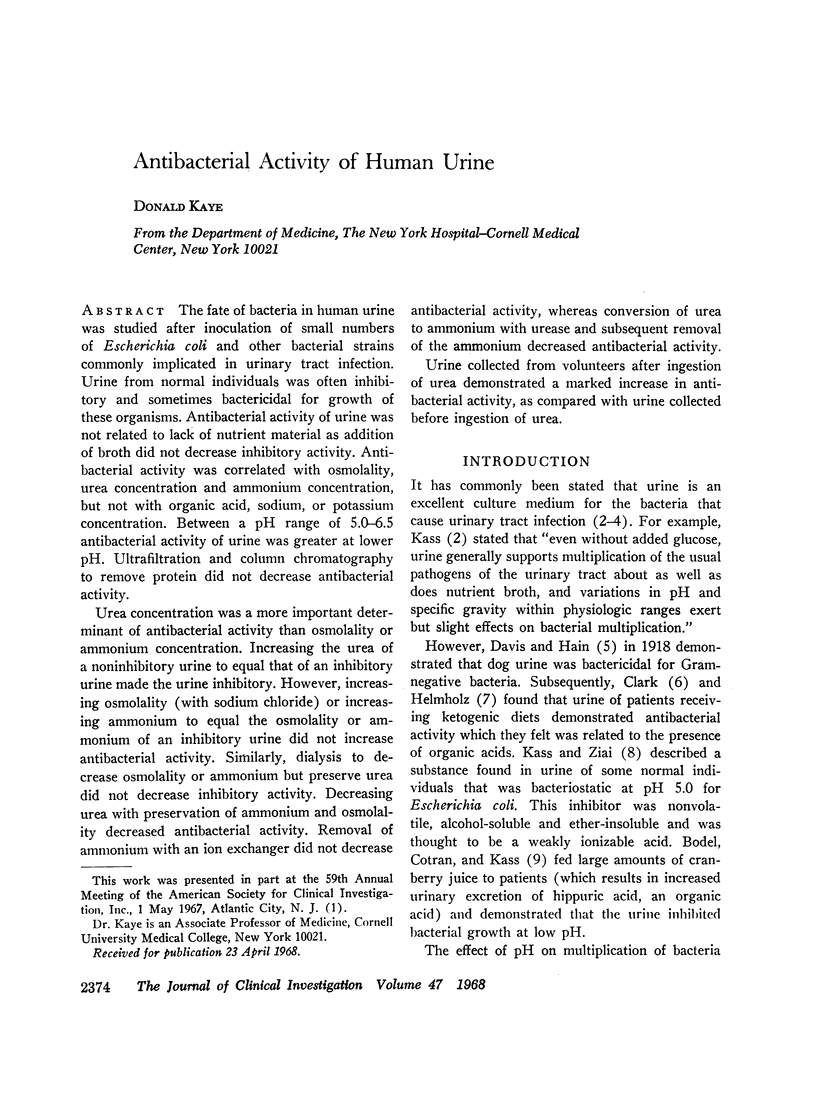

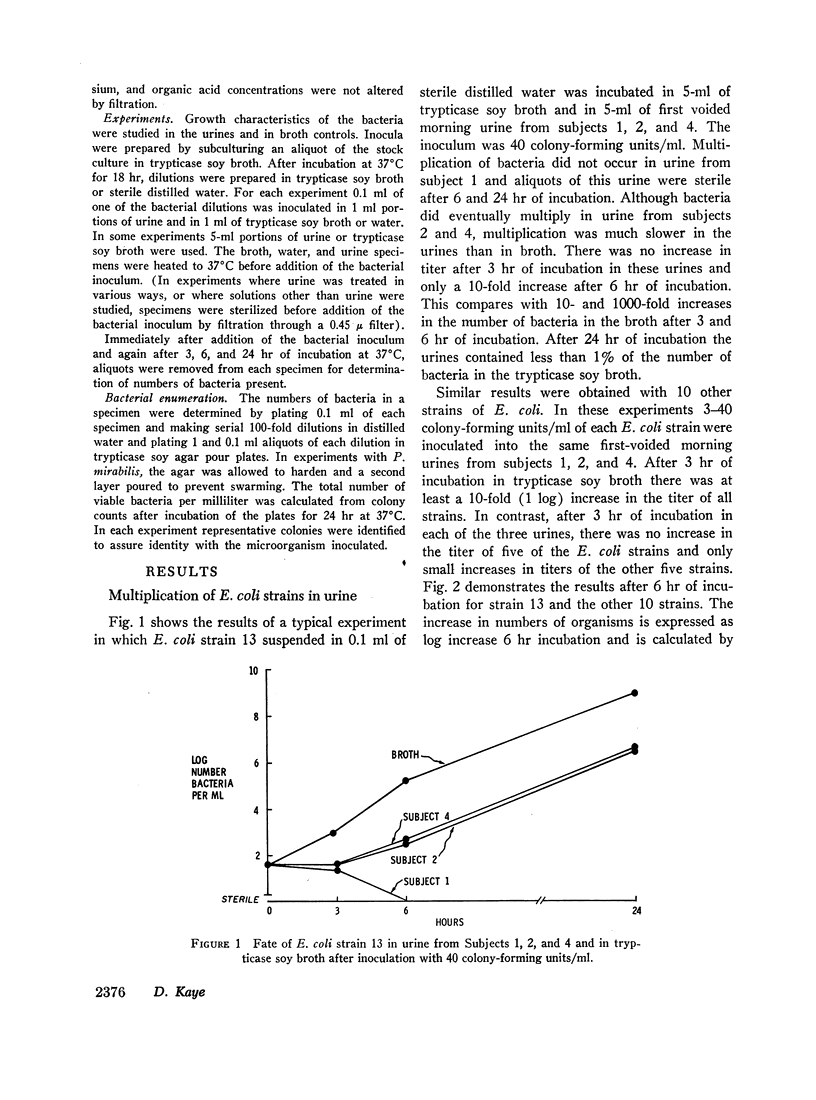
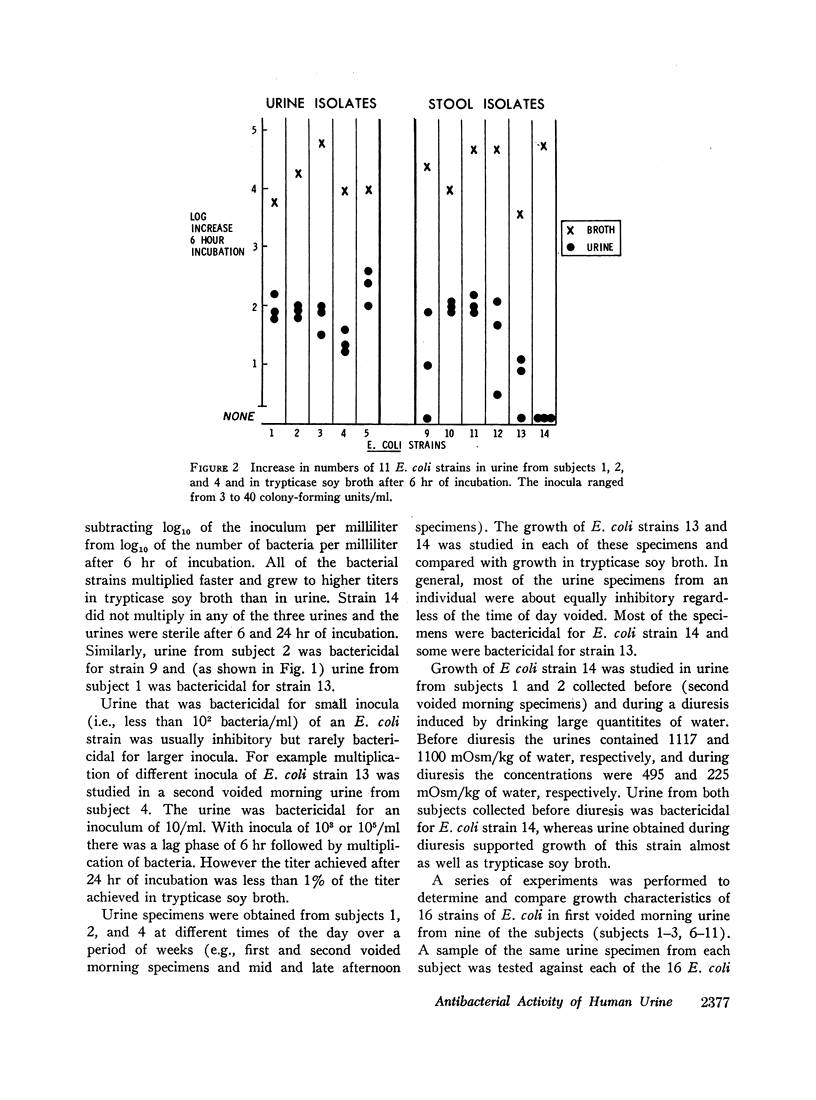
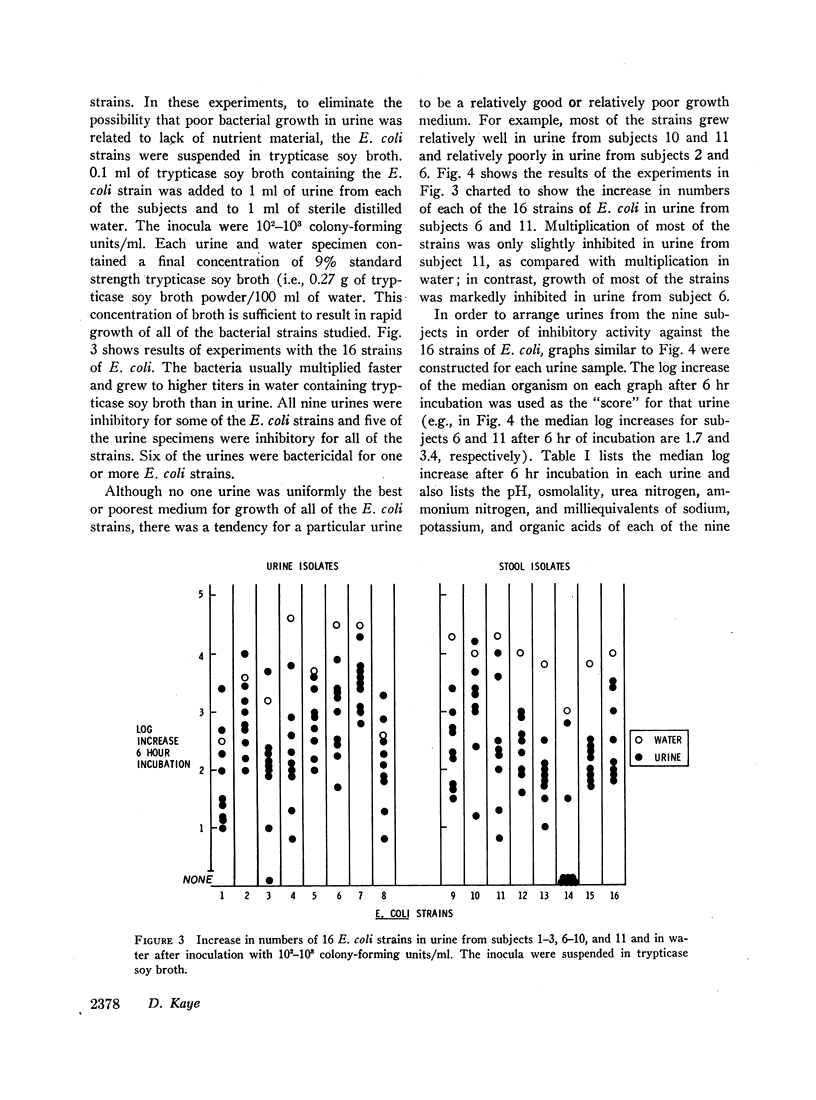
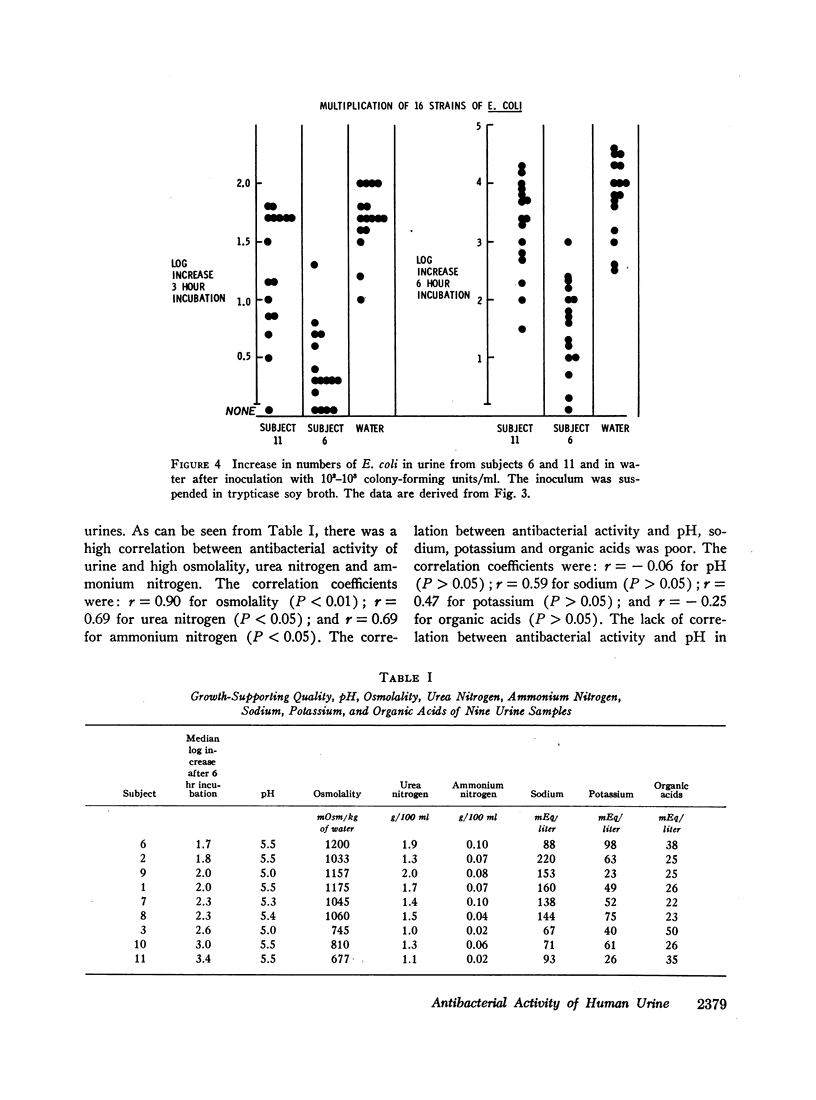
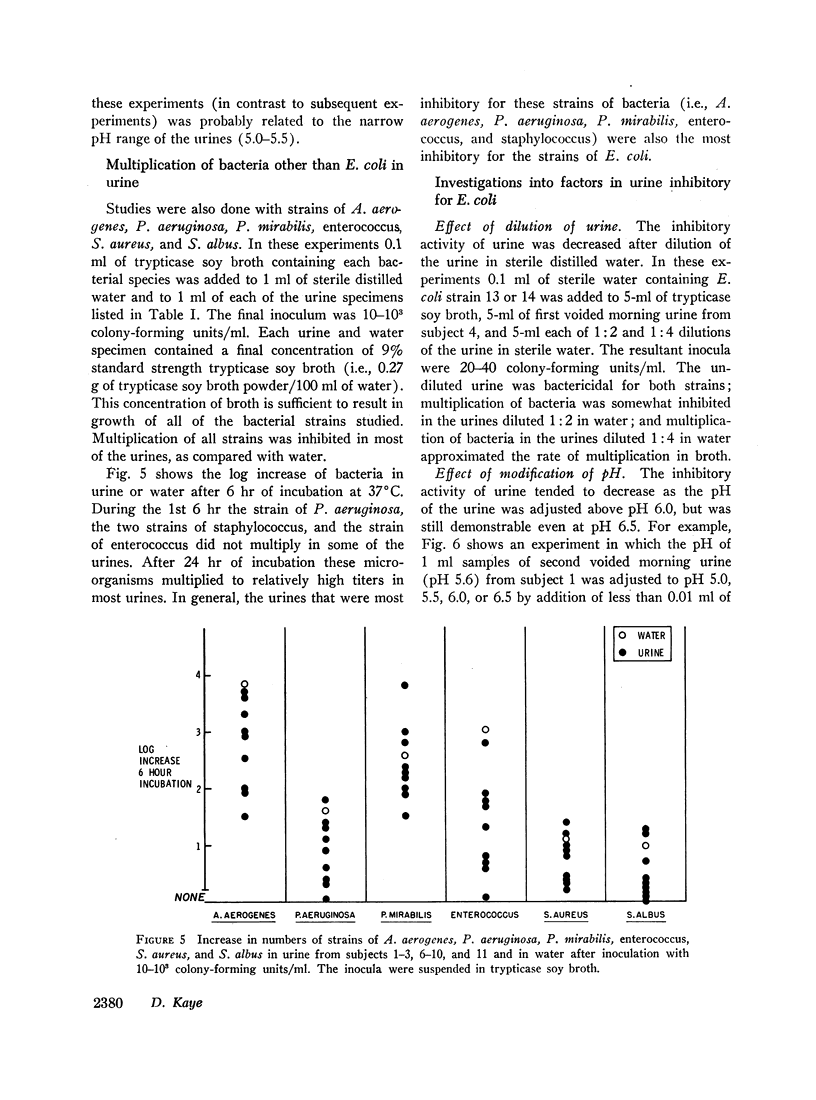
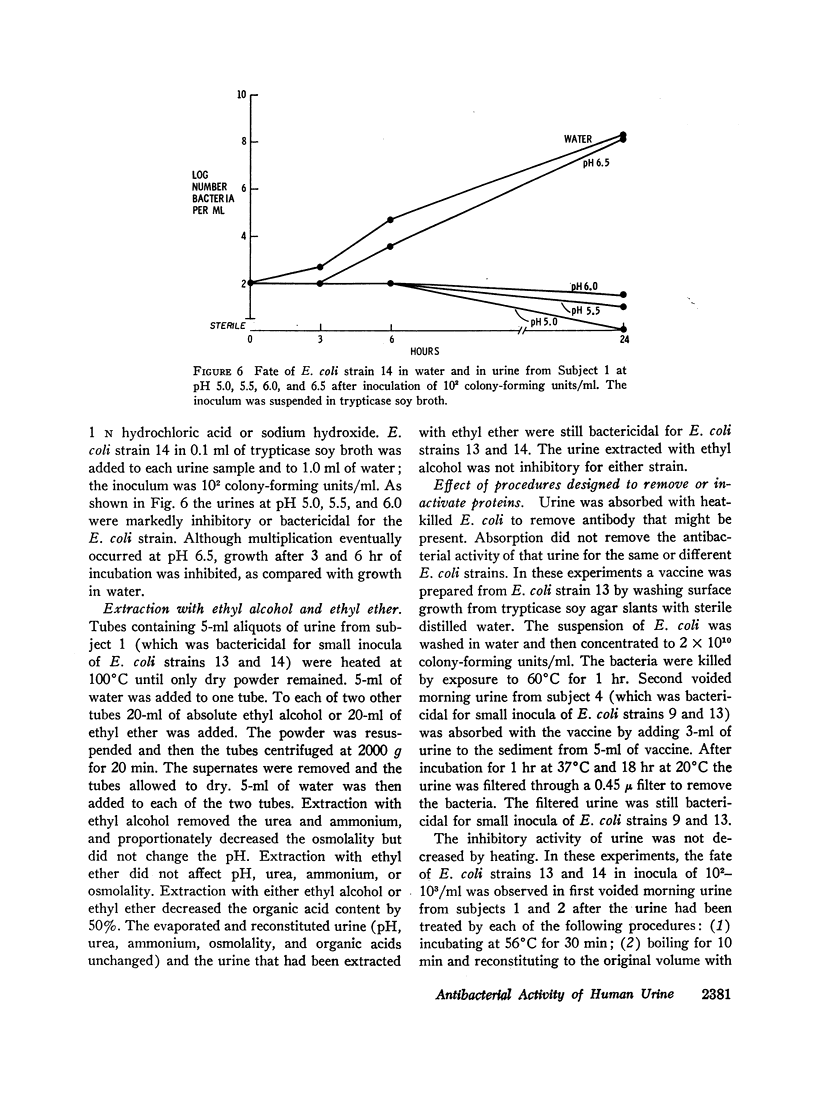
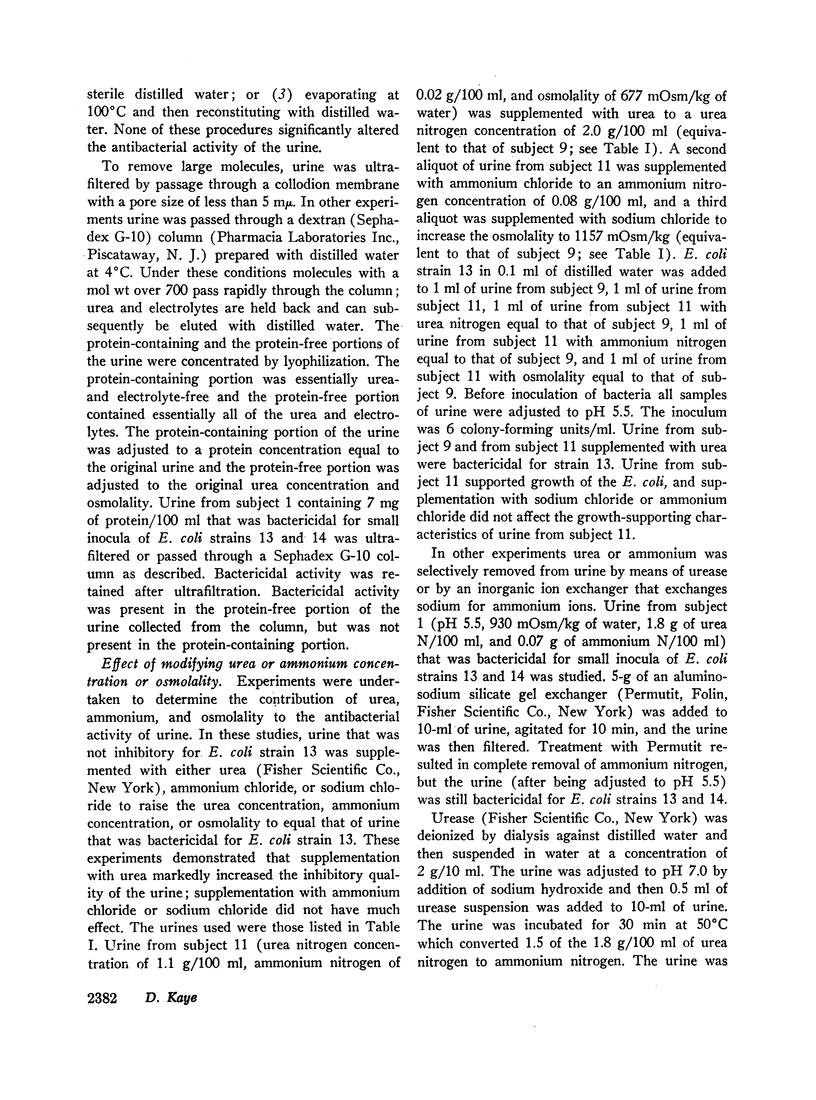
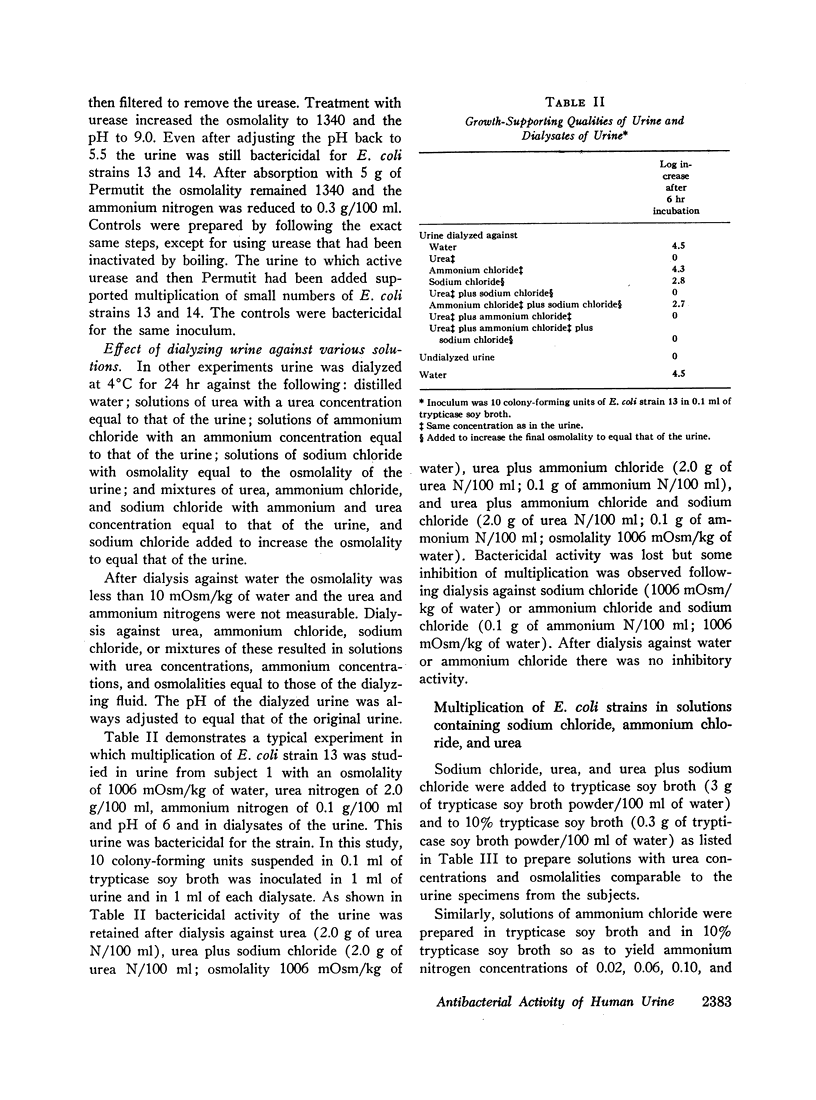

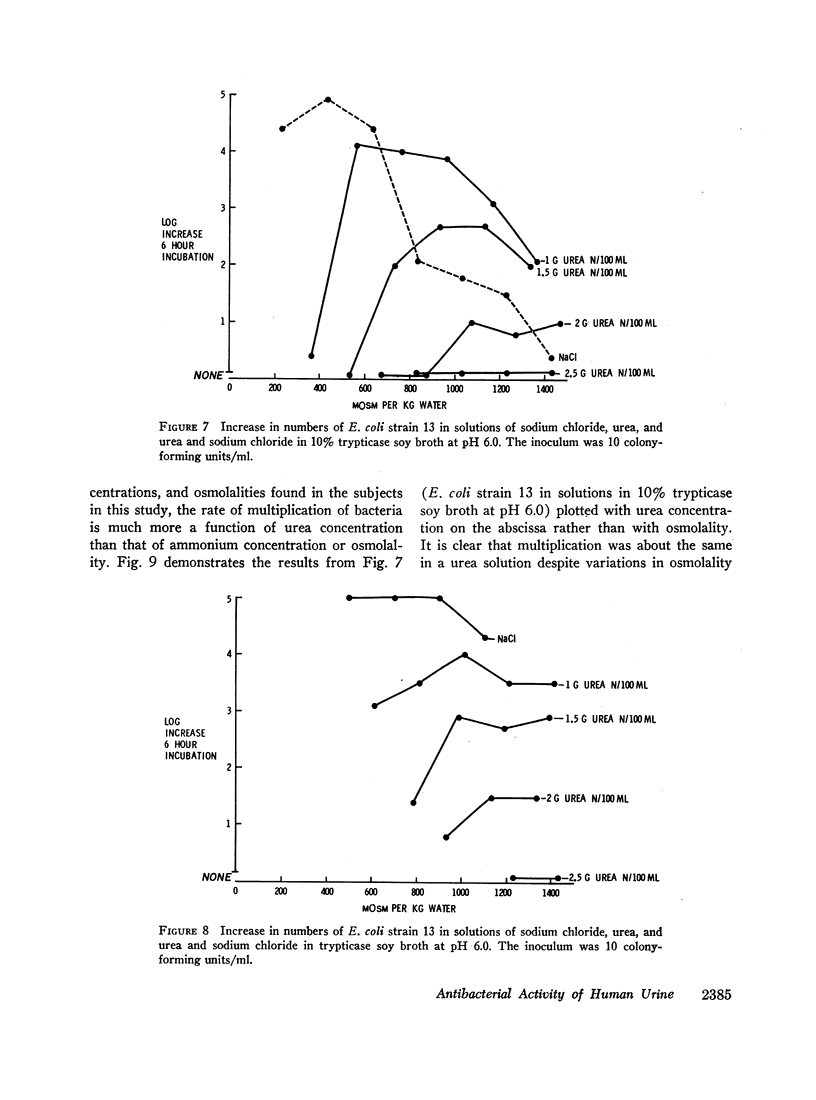
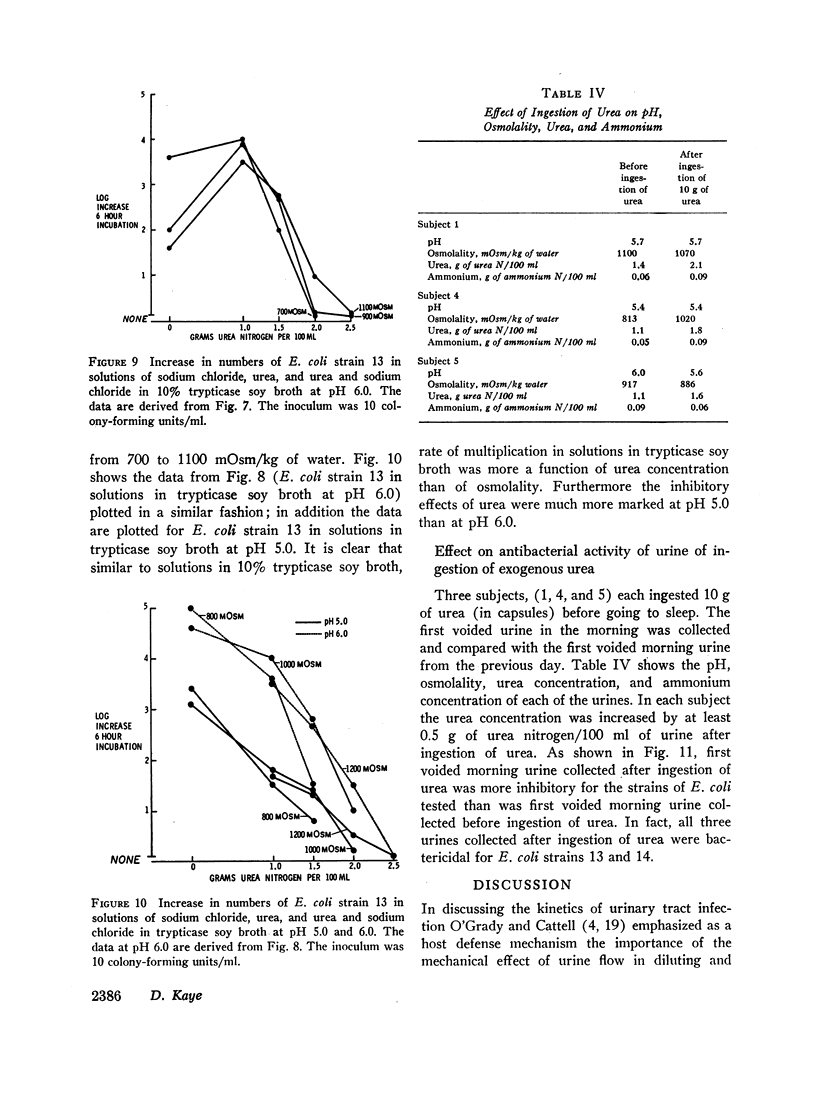
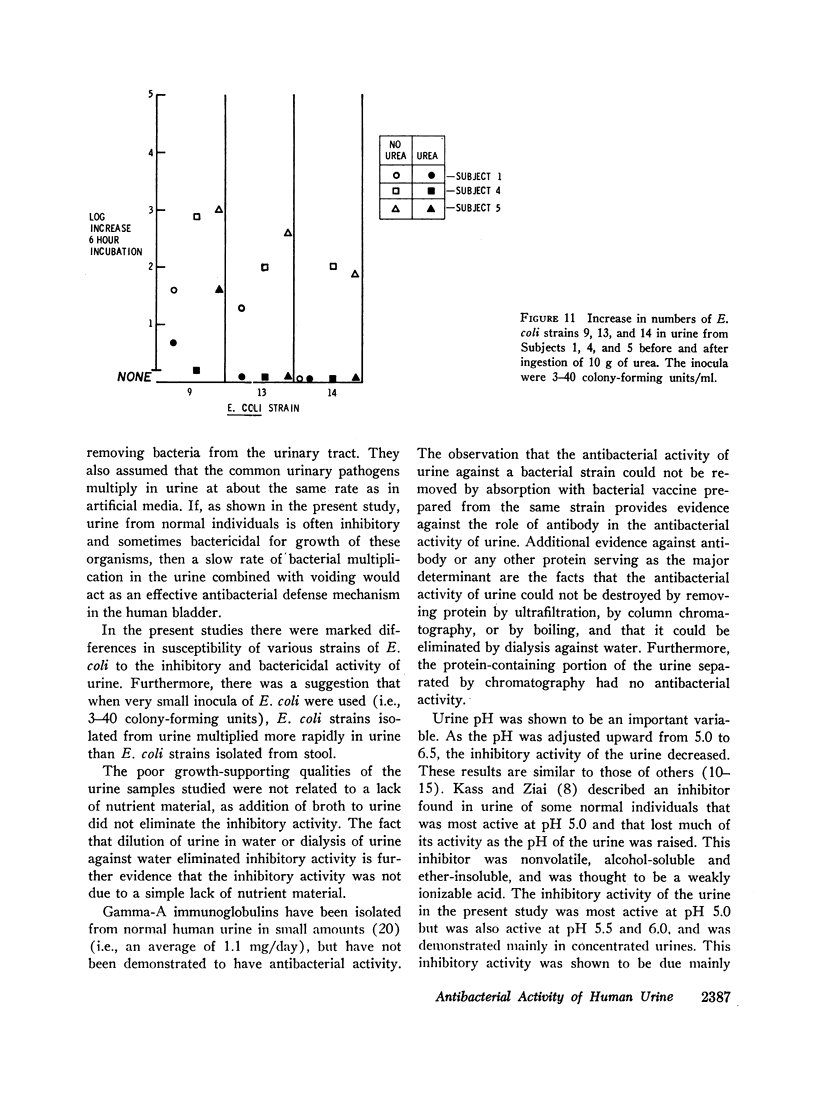
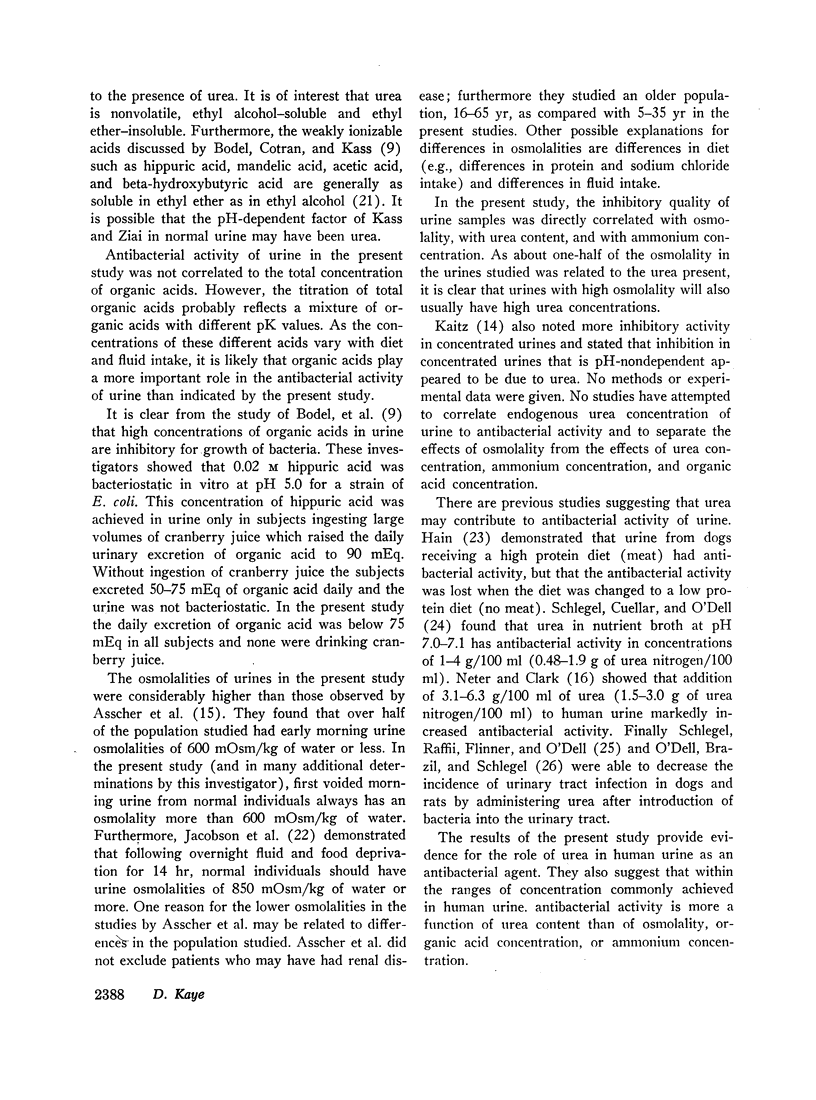
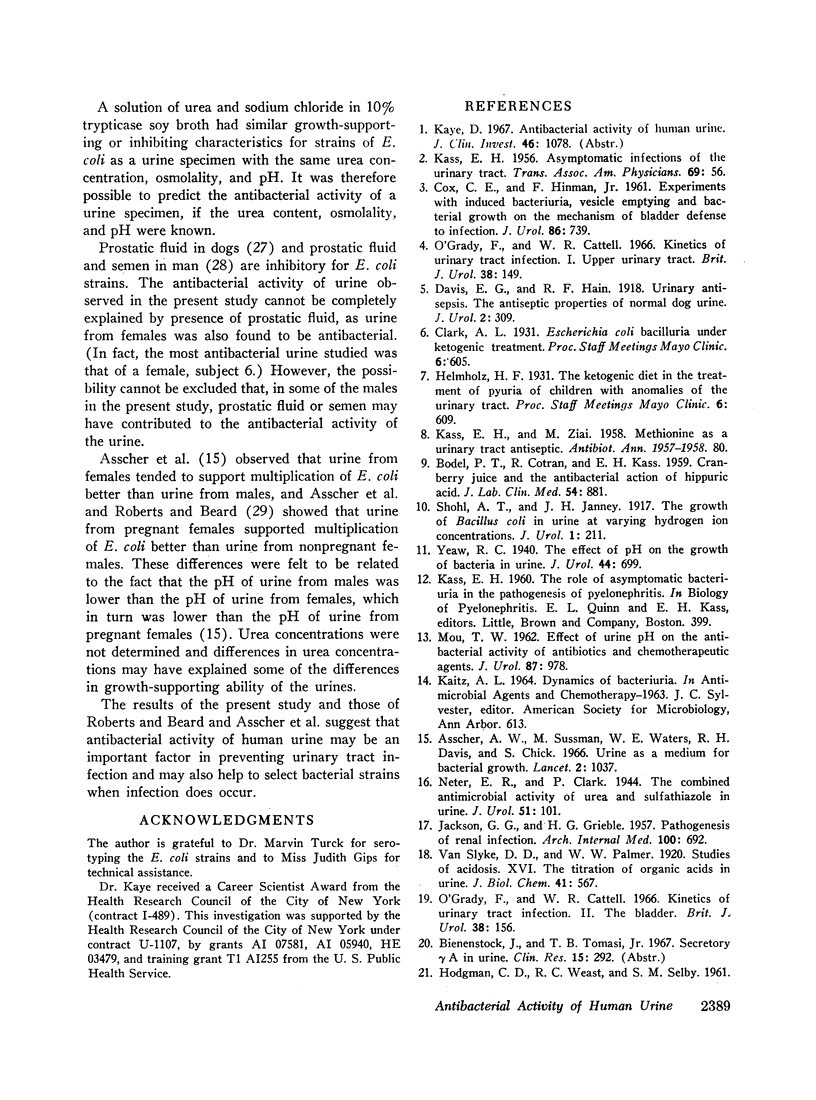

Selected References
These references are in PubMed. This may not be the complete list of references from this article.
- Asscher A. W., Sussman M., Waters W. E., Davis R. H., Chick S. Urine as a medium for bacterial growth. Lancet. 1966 Nov 12;2(7472):1037–1041. doi: 10.1016/s0140-6736(66)92023-x. [DOI] [PubMed] [Google Scholar]
- BODEL P. T., COTRAN R., KASS E. H. Cranberry juice and the antibacterial action of hippuric acid. J Lab Clin Med. 1959 Dec;54:881–888. [PubMed] [Google Scholar]
- COX C. E., HINMAN F., Jr Experiments with induced bacteriuria, vesical emptying and bacterial growth on the mechanism of bladder defense to infection. J Urol. 1961 Dec;86:739–748. doi: 10.1016/S0022-5347(17)65257-1. [DOI] [PubMed] [Google Scholar]
- JACKSON G. G., GRIEBLE H. G. Pathogenesis of renal infection. AMA Arch Intern Med. 1957 Nov;100(5):692–700. doi: 10.1001/archinte.1957.00260110008002. [DOI] [PubMed] [Google Scholar]
- JACOBSON M. H., LEVY S. E., KAUFMAN R. M., GALLINEK W. E., DONNELLY O. W. Urine osmolality. A definitive test of renal function. Arch Intern Med. 1962 Jul;110:83–89. doi: 10.1001/archinte.1962.03620190085013. [DOI] [PubMed] [Google Scholar]
- KASS E. H. Asymptomatic infections of the urinary tract. Trans Assoc Am Physicians. 1956;69:56–64. [PubMed] [Google Scholar]
- MOU T. W. Effect of urine pH on the antibacterial activity of antibiotics and chemotherapeutic agents. J Urol. 1962 Jun;87:978–987. doi: 10.1016/S0022-5347(17)65077-8. [DOI] [PubMed] [Google Scholar]
- O'Grady F., Cattell W. R. Kinetics of urinary tract infection. I. Upper urinary tract. Br J Urol. 1966 Apr;38(2):149–155. doi: 10.1111/j.1464-410x.1966.tb09693.x. [DOI] [PubMed] [Google Scholar]
- O'Grady F., Cattell W. R. Kinetics of urinary tract infection. II. The bladder. Br J Urol. 1966 Apr;38(2):156–162. doi: 10.1111/j.1464-410x.1966.tb09694.x. [DOI] [PubMed] [Google Scholar]
- O'dell R. M., Brazil W. O., Schlegel J. U. Effectiveness of urea in prophylaxis of experimentally induced bacteriuria in rats. J Urol. 1967 Jan;97(1):145–146. doi: 10.1016/S0022-5347(17)63001-5. [DOI] [PubMed] [Google Scholar]
- ROBERTS A. P., BEARD R. W. SOME FACTORS AFFECTING BACTERIAL INVASION OF BLADDER DURING PREGNANCY. Lancet. 1965 May 29;1(7396):1133–1136. doi: 10.1016/s0140-6736(65)91957-4. [DOI] [PubMed] [Google Scholar]
- SCHLEGAL J. U., RAFFII P., FLINNER R., O'DELL R. STUDIES IN ACUTE EXPERIMENTAL PYELONEPHRITIS. Invest Urol. 1964 Jan;1:362–366. [PubMed] [Google Scholar]
- SCHLEGEL J. U., CUELLAR J., O'DELL R. M. Bactericidal effect of urea. J Urol. 1961 Dec;86:819–822. doi: 10.1016/S0022-5347(17)65264-9. [DOI] [PubMed] [Google Scholar]
- TAYLOR P. W., MORGAN H. R. Antibacterial substances in human semen and prostatic fluid. Surg Gynecol Obstet. 1952 Jun;94(6):662–668. [PubMed] [Google Scholar]


